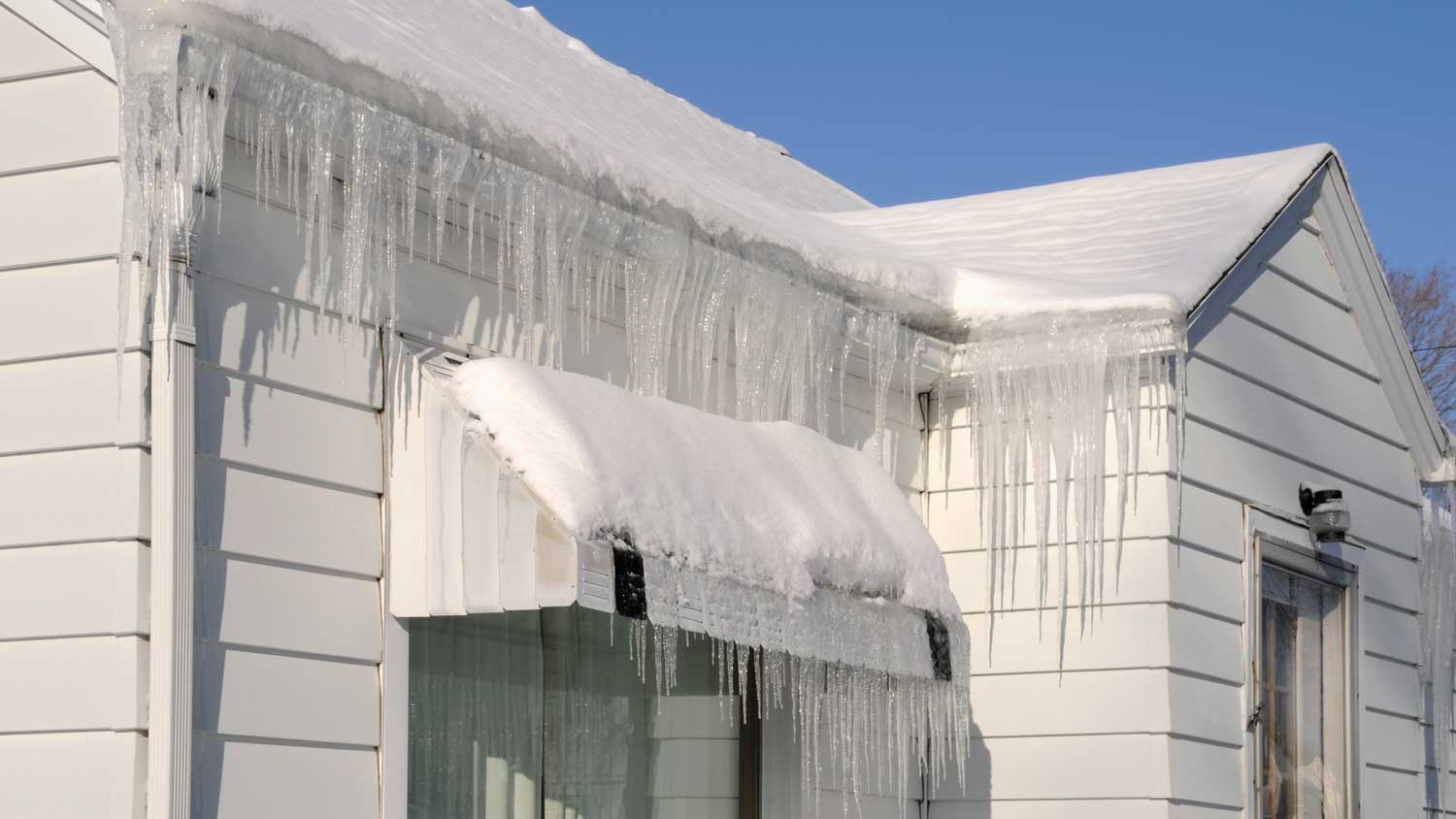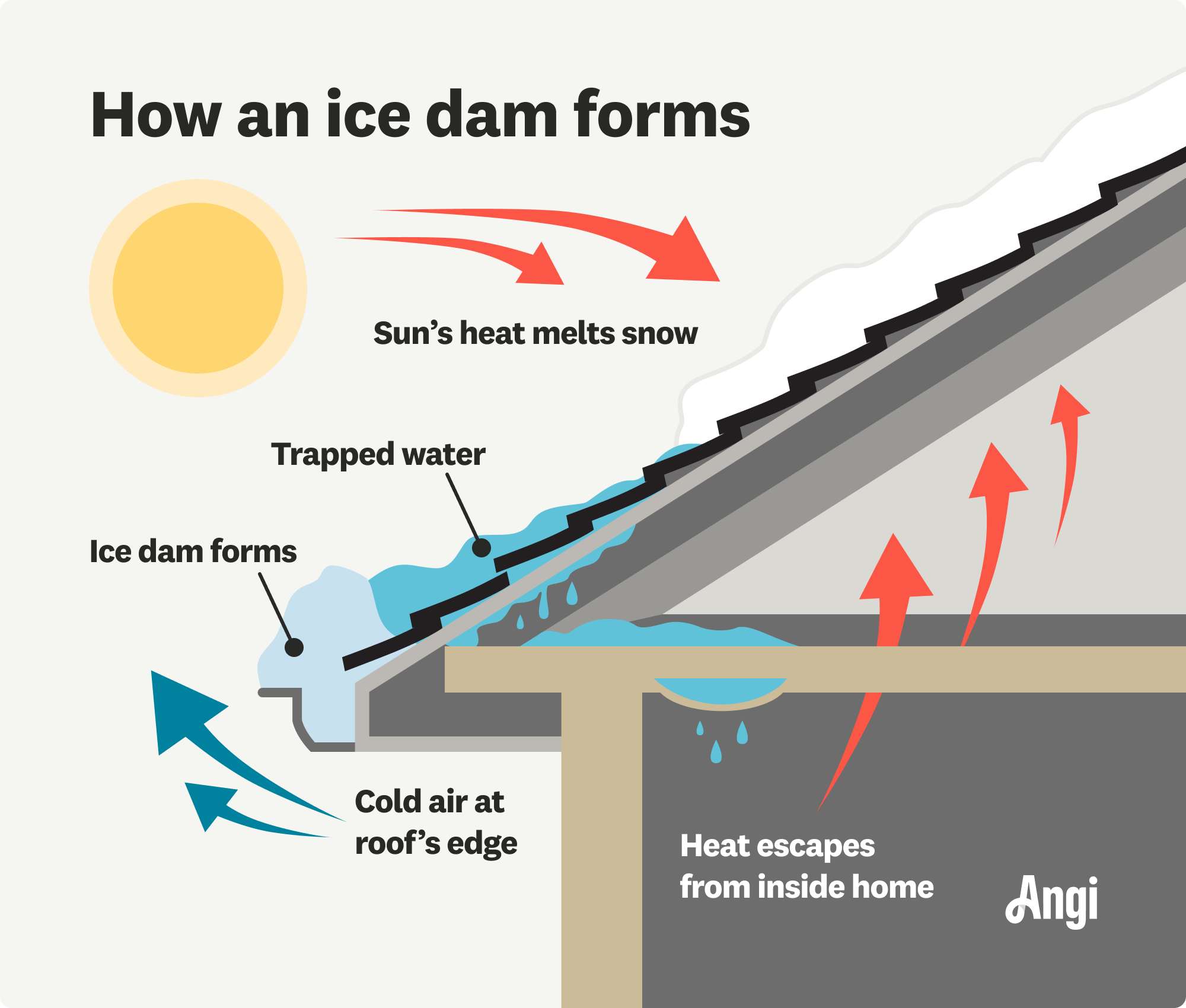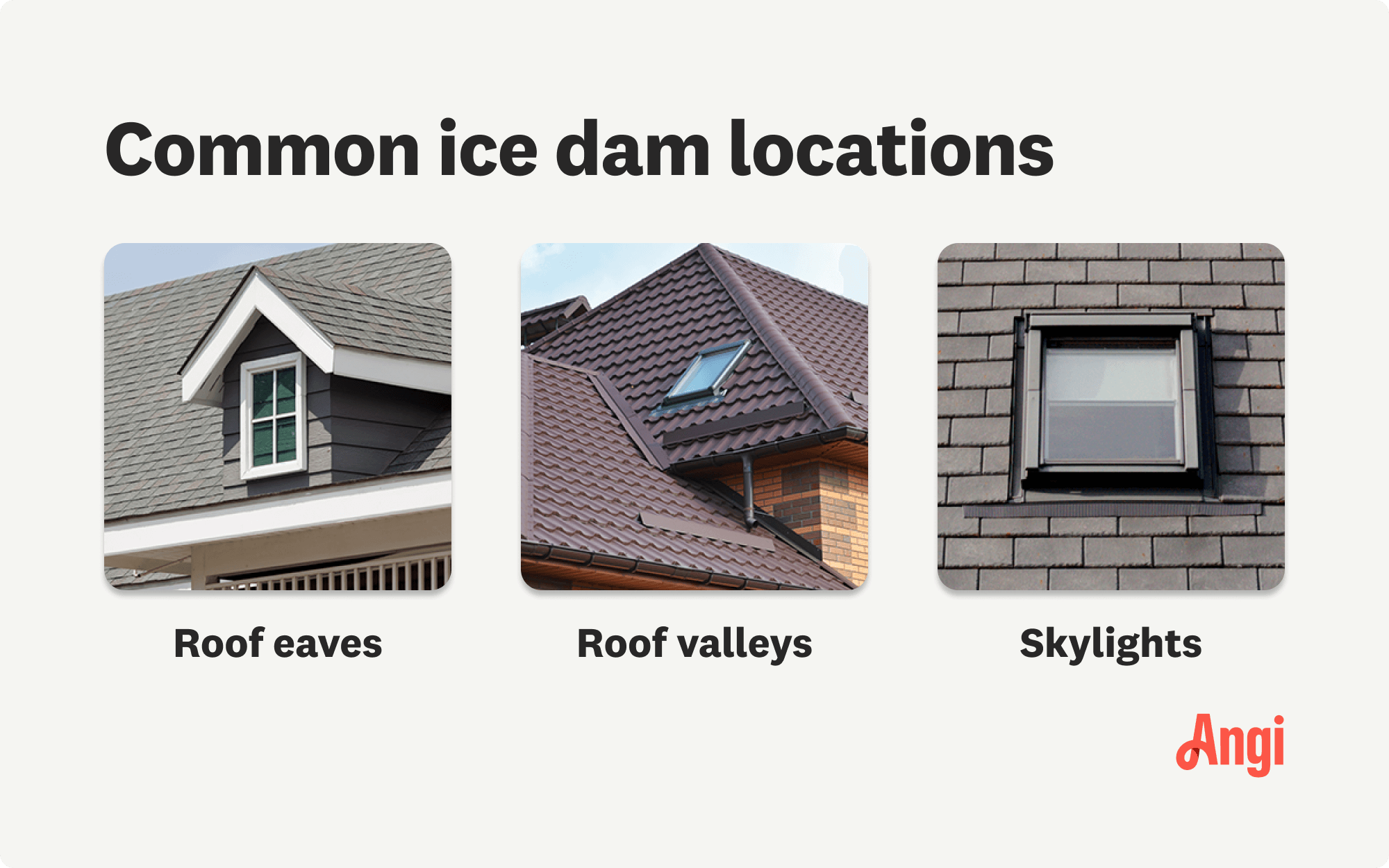
Discover the average roof heating cable installation cost, key price factors, and how to budget for your project. Learn how to save and what to expect.
These icy indicators could signal a serious problem


Ice dams can cause roof and interior damage if not promptly removed.
Signs of ice dams include spots of melted snow and icicle formation.
Interior water stains may indicate ice dams are present.
Ice buildup on exterior walls can be caused by ice dams.
Many homeowners are surprised by serious damage from ice dams every winter because they don’t know what to look for when it comes to these icy formations. This guide will walk you through four common signs of ice dams as well as what to do if you find them, how to prevent them, and how to know it’s time to call in a pro.
Ice dams are chunks of ice that form at the edge of your roof when snow or ice partially melts and then refreezes before draining off the roof. Not only can ice dams cause roof damage, but they can also damage the interior of your home.
When an ice dam blocks water’s path off the roof, the water is forced underneath the shingles, damaging the shingles, the roof deck, and other roofing components. In addition, once the water has penetrated the roof, it can leak into your attic, walls, and ceilings, causing mold, staining, water damage, and material deterioration.

Knowing what to look for can help you spot an ice dam formation early on, giving you time to fix the problem before it causes expensive damage. While the most obvious sign of an ice dam is seeing a large chunk of ice at the roof edge or gutter, there are other indications that an ice dam may be forming.
If you see spots of melted snow on the roof while the rest of the roof still has frozen snow, this can be a sign that the roof in those spots is being warmed by air from inside the house. A poorly insulated attic can allow warm air to escape through the roof, melting snow in that area. Once that melted snow starts to run off the roof, it’ll encounter a colder spot where the snow is still frozen and refreeze, forming an ice dam.
While icicles aren’t always a sign of ice dams, you’ll want to investigate if you see them hanging from the roof edge or gutters. Icicles can form just from dripping water refreezing when it falls into freezing air, but they can also form if ice dams are preventing that water from draining off the roof or into the gutters and the water is being forced over the surface of the ice.
Finding water stains on the interior surface of your roof, on your ceilings, or high up on interior walls can indicate that water has entered through the roof underneath the shingles. Ice dams prevent water from flowing off the roof, so without anywhere else to go, the water makes its way inside your home, damaging anything it comes in contact with.
When ice dams block the edge of the roof, water can leak under and behind the eaves and form ice on exterior walls, under the eaves, and behind the soffits. Finding ice on unexpected exterior surfaces is reason enough to look for ice dams that may be forcing water to reroute.


If you’ve spotted the signs of ice dams, it’s important to remove them before they cause serious damage to your roof or home. Hiring a pro who removes ice dams as soon as you know you have a problem will reduce the chances that the ice dam will get worse. A local roof cleaner who specializes in ice dam removal can assess the situation and safely and effectively remove the problem.
Ice dam removal should only be attempted by homeowners with extensive roofing experience due to the many safety risks involved. Icy ladders can be very slippery, and a snow-covered roof is a serious fall risk. In addition, improper ice dam removal can damage your shingles or gutters and lead to more problems down the road. In most cases, this job is best left to the pros.

Since snow that melts and refreezes causes ice dams, the best ways to prevent ice dams keep that melt/freeze cycle from happening. Ensuring your attic is properly insulated is the best way to prevent ice dams, as it will keep the snow above the attic from melting faster than the rest of the roof. Clearing off your roof after a snowstorm with a roof rake or roof brush can also help prevent ice dams.
You may also consider installing roof heating cables to keep the edge of your roof and the gutters from freezing. Roof heat cables aren’t dangerous when installed properly using safety-rated products, but you may see a sharp increase in your electric bill while they’re in use.
Your attic should be similar temperature to outside, which eliminates the melting on the roof which then will eliminate the ice problems. Keeping your attic cold through insulation on the attic floor and properly functioning ventilation is the solution.
Ice dam removal costs between $650 and $2,000 on average, depending on the size of the ice dam, the height and pitch of your roof, and the location of the ice dam. Ice dam removal can carry a high price tag, but it’s a small amount to invest when compared to the expensive damage ice dams can cause to your roof and home.
From average costs to expert advice, get all the answers you need to get your job done.

Discover the average roof heating cable installation cost, key price factors, and how to budget for your project. Learn how to save and what to expect.

Ice dams can seriously damage your roof and home. Learn what causes them and how to prevent ice dams from forming this winter.

They’re pretty in the winter sunshine, but are icicles bad for your roof? Learn whether you should worry about ice buildup and icicles hanging from your roof.

An ice and water shield can protect your roof and save you the headache of premature roof replacement. Learn everything you must know about the shield.

In this guide, find out how much snow a roof can hold so you can keep your home and family safe this winter when the snow starts falling.

It’s a common myth that gutters cause ice dams, but any roof with snow on it can form ice dams. Learn how to protect your roof this winter.